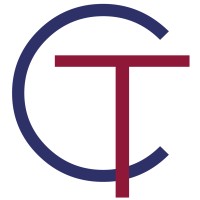Whether you play golf for fun or on a more serious level, or just admire the grass on the course as you drive by in your car, a golf course is the pinnacle of lawn care and maintenance. The quality and conditions of the greens and fairways are critical to your game.
Apart from a groundskeeper cutting the tee box while you’re putting on the green nearby, many of us don’t think about the maintenance of a golf course. The reality is that the upkeep of a golf course is very labor intensive and requires a high degree of management. Additionally, with a push towards sustainability, using technology for better management of resources is becoming a critical piece of maintaining a golf course.
So, what is Golf Information System? A Golf Information System is not a real software or solution, not yet anyways. It’s a fun play on words for the real GIS or Geographical Information System. GIS has been used in cities, counties, and states for over 20 years to organize and manage digital information such as parcel data, utilities, infrastructure, and other assets. GIS allows you to store digital data in a graphical format and allows users to add information or intelligence to the data.
Golf courses share some similarities with cities, on a smaller scale. They are required to manage golf course assets and resources such as vegetation, water and wastewater, pavement,
building/structure, equipment, and personnel. When the team from AJ Jolly Golf Course in Campbell County Kentucky approached us about challenges with managing their sprinkler valves and sprinkler heads, a GIS solution made sense.
Challenge
As part of our consultation, our discussion focused on two things: the challenges they had with maintaining their sprinkler system maps and knowing exactly where the valve controls were for each segment of the system.
The sprinkler system map started with a paper map that covered their entire 18-hole course and was created when the sprinkler system was installed in 1995, showing the location of the lines and heads on each hole. From that main map, sections of the golf course were copied to smaller more manageable sheets that could be taken into the field and used as a visual
guide for maintenance. It was a simple yet effective system that worked well for many years. These maps were used frequently, taken out on the course rain or shine, thrown in golf carts or placed in pockets to locate, adjust, and perform system maintenance (see Image 1). The maps became worn, torn, smudged, and sometimes lost,
Our client was looking for a more effective method for locating the valves and being able to quickly turn them off in cases of leaks, damage or just regular maintenance.

so new copies of segments were made frequently, but without these paper maps, managing their sprinkler system would be nearly impossible.
For the valves, the golf course was interested in more precise locations. These valves sit at grade level or slightly below grade so they would slowly become hidden and buried, making them very challenging to locate. In maintenance situations, finding the valves took time, often required a magnetic locator and a shovel, and even then, you were not sure it was the right valve for the section that contained the leak. They were looking for a more effective method for locating the valves and being able to quickly turn them off in cases of leaks, damage or just regular maintenance.
Solution
The information on these maps was invaluable, and precisely locating the valves for future access was critical. Our plan was to combine all this data into one source, making a more permanent digital solution. We were also looking to create something easy to maintain, easy to update, and with the ability to use on a cell phone or tablet that could be taken into the field. With today’s GPS enabled devices, the ground crews could use the digital solution to literally drive a golf cart to the precise location of the valve or sprinkler head for maintenance.
The best and most effective method for creating and hosting the data was using ArcGIS. We decided on using ArcGIS Pro to develop the combined database and then ArcGIS Online (AGOL) for posting the final dataset. We were originally considering new aerial acquisition in support of the project, but we knew that Campbell County had recent aerial imagery acquired through Link-GIS that could be used as a back-drop for the AGOL final dataset.
Approach
The starting point for this project was to establish highly accurate locations for the sprinkler valves. The location of the valves was not only critical for the golf course’s use, but we would also use them to better scale the paper maps to fit real-world coordinates. CT’s survey team went out in the field, as the golf course staff did many times, with paper maps to roughly locate each valve. They then searched the area with a magnetic locator to find the head and carefully uncover it. The survey team also surveyed a few of the sprinkler heads to aid in the process. The valves and heads were then more precisely located using survey grade GPS equipment to measure the location to sub-foot accuracy.
Our next step in the process was to take the paper maps and harvest the critical information from them. As mentioned previously, there were two sets of maps, the main overall map of the entire system, and the smaller segments. We decided to digitally scan all available documents. As most of us know, scanning documents can present its own challenges, but when you scan documents that have been out in the field, crushed, folded, smeared and stretched, that can add a whole new level of challenge to the process. Upon completing the scanning, we also discovered we need to do a little color adjustment to the scans to bring forward the important information and soften the other marks such as mud and water stains.
Once the maps were scanned, the next step in the process was to move and scale the digital copies of the map into a more accurate geographical location to match real-world coordinates. This process was completed in ArcGIS Pro’s Geo-referencing tool. Mark Hammond, CT’s GIS expert, used the survey information from the valves and heads, along with landmarks on the paper maps, to more precisely locate them in real-world coordinates. Additionally, he was able to use Campbell County’s most recent aerial imagery as a back-drop for additional guidance.

The scaled maps were then used to digitize the information to create symbols representing each point feature such as valves, sprinkler heads, and laterals. Those symbols were then connected with line work representing the various size water lines within the system (see Image 2.) With all the data now digitized in ArcGIS Pro, we now had a more geospatially accurate foundation of their sprinkler system for their entire golf course!
Adding Intelligence
The benefits of using ArcGIS for a project like this is the ability to add intelligence and information to the map beyond what the original hard copy data provided. The range of information you can add in ArcGIS is almost unlimited, but it comes down to what information is useful and what information can be maintained over time. Unfortunately, in many applications of GIS, too much information is added and tracked, and it becomes overwhelming for the client to maintain, so it is essential to manage expectations and needs as part of the consultation with your client.
CT reviewed what information was important to our client and what additional information they would like to track in the future. As mentioned previously, the paper maps had a wealth of information on them from the installer, including valve types and manufacturer, sprinkler head types and manufacturer, diameter and material of waterline, and even the length of the waterline. All this existing information was important to the client, so it was transferred to the new digital map. Additionally, we added a replacement date and notes field in the attribute table for future use.
The final product was loaded into an ArcGIS Online map for our client to use (see Image 3.) They plan to maintain and update the information on the map moving forward using both in-office and in-field editing capabilities.
Digital Golf Information Systems
For a long time, GIS has been looked at as a tool for large entities such as cities and counties, but in recent years the benefit of its applications has been realized for smaller entities. The idea of using GIS to help manage a golf course is long overdue. The game of golf has been moving in a digital direction for over a decade, bringing more intelligence to the players such as ball tracking, instant measurements of ball
location to pin, and more recently, intelligent golf carts with GPS and interactive maps. Now, GIS for management of the course and the intelligence brought to the golf game can play and live together!
Soon after the development of the final map, the data was used in real time when a tree fell on the course during a storm. The golf course manager was able to identify that the tree fell near one of the buried valves that was recently located through this process. That allowed the clean-up crews to stay away from the valve, reducing the risk of damaging it with heavy machinery. It was an early win for a system that will reap benefits for years to come.
Want to learn more? Contact: Joe Cantz. CP, SP, GISP | 440-530-2328 | jcantz@ctconsultants.com






